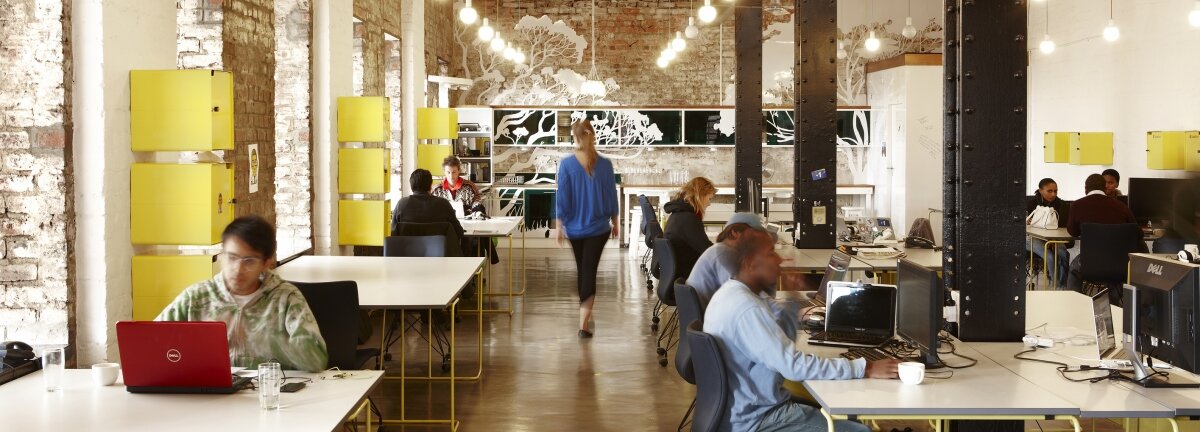Is there a recipe for designing ‘low-fat’ office buildings?

As part of our Active by Design campaign we asked UCL’s Dr Marcella Ucci to talk about the research project they are running that could help make offices healthier places to be.
The health benefits of regular physical activity are well documented, but in the UK participation levels are worryingly low. But it’s not just low activity levels that are the problem, even if we exercise before or after work, sitting for extended periods of time has also been associated with poor health outcomes. Since we spend a large proportion of our time indoors and at work, it seems a good idea to try and establish if some office buildings are more conducive to physical activity or sedentary behaviour than others. In other words, can we find the perfect recipe for designing a ‘low-fat’ active office building?
Restructuring office layout, particularly the distance required to reach ‘office building destinations’ (e.g. printers and refreshment points), might increase office workers’ step count and standing time (which are forms of light physical activity), and reduce sitting time. But the influence the indoor office environment has on step counts, standing and sitting time is currently unknown.
Findings from this study will contribute to a small but growing body of research that aims to provide practical guidance for designers to help create a ‘low-fat’, active office buildings.
The Active Building study I am involved with at UCL is helping to address this knowledge gap by:
- Understanding the number of of steps, as well as standing and sitting times typical in an office environment
- Identifying potential determinants of workplace activity, with a particular focus on how the design of spaces might affect this
The study funded by the National Institute of Health Research School for Public Health Research and is a unique collaboration between public health and built environment researchers at UCL, involving monitoring the physical activity of a sample of office workers complemented by a survey of a larger group.
Workers within selected office buildings will be sent a questionnaire which includes demographics, workplace physical activity and sitting behaviour - and potential workplace determinants of these behaviours. From the questionnaire respondents, around 25 workers will be recruited from each building to join the monitoring study, which involves wearing a motion sensor (to monitor step counts and sitting time inside and outside the office) and a tracking device (to identify location in the office) for one week.
Findings from this study will contribute to a small but growing body of research that aims to form the basis of practical guidance for designers and other organisations about the best ingredients to help create a ‘low-fat’, active office building.
For more information about the Active Buildings study, visit our website at: activebuildings.co.uk
Subscribe to our newsletter
Want to keep up with the latest from the Design Council?
